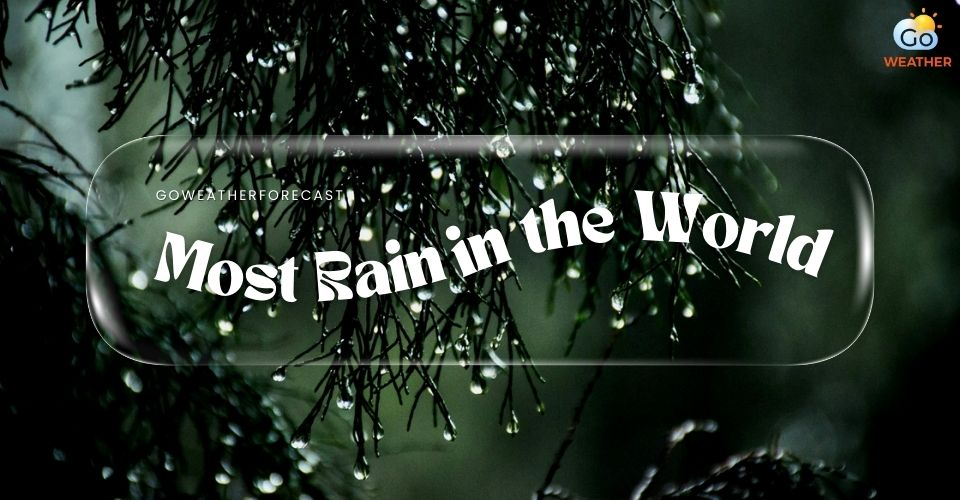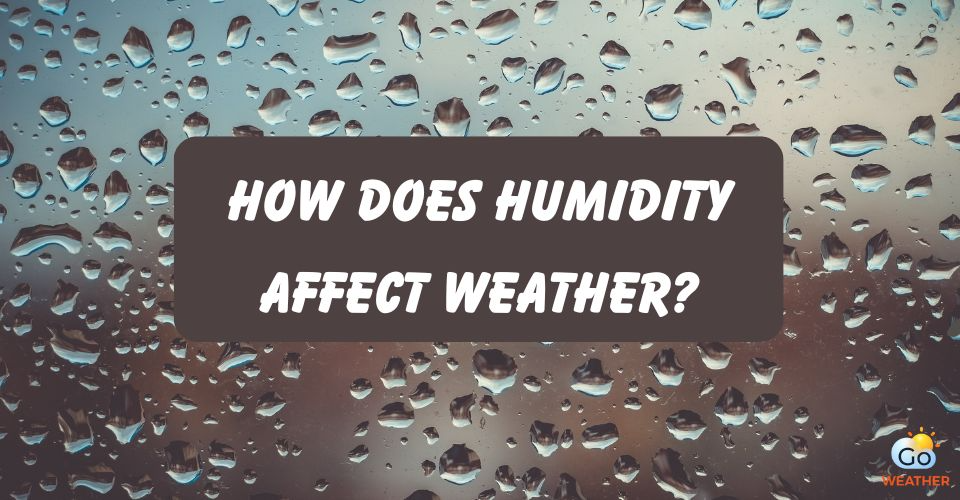How to Predict Weather with Clouds? 10 Different Types of Clouds
- How to Read Clouds
- Types of Clouds That Predict Weather
- Cumulus Clouds
- Stratus Clouds
- Cumulonimbus Clouds
- Stratocumulus Clouds
- Altocumulus Clouds
- Altostratus Clouds
- Nimbostratus Clouds
- Cirrus Clouds
- Cirrostratus Clouds
- Cirrocumulus Clouds
- What Types of Clouds Indicate Fair Weather?
- What Types of Clouds Indicate Impending Rain?
- Tips to Predict Weather With Clouds
Before the invention of weather forecasting tools, humans knew how to predict weather with clouds by observing different patterns of clouds, such as size, shape, altitude, vertical depth, and color. The basic rules for this practice are relatively simple, but many people need clarification because there are multiple types of clouds with different nuances. Now, let’s investigate what clouds can tell us about the weather and learn some tips for using clouds to predict weather!
.jpg)
Can you predict weather with clouds?
How to Read Clouds
Reading clouds is simply the observation of cloud visual characteristics such as a cloud's overall size, shape, color, and height.
To identify these patterns in clouds, you should ask yourself some questions like:
-
How high are the clouds?
-
Are clouds at low, medium, or high altitudes?
-
What color are clouds?
-
How much of the sky is covered?
-
How fast are the clouds moving?
-
Others,…
By observing the sky with these questions in mind, you’ll quickly realize the differences between the size, color & altitude of clouds. From these raw observations, you can classify different types of clouds to predict the weather.
.jpg)
How to predict weather by looking at clouds?
Types of Clouds That Predict Weather
Clouds are one of the most reliable predictors of weather. There are about 10 types of clouds that you can recognize.
However, if you get their names confused, remember that the higher the clouds, the better the weather will be. We can better predict weather with clouds by learning how to identify different types.
|
Low Altitude Clouds (0-6500 ft) |
Medium Altitude Clouds (6500-23,000 ft) |
High Altitude Clouds (15,000-60,000 ft) |
|
|
|
Each cloud type can tell you the current weather conditions and help us predict what’s likely to happen. Some clouds are indicators of approaching rain and storms, while others could tell fair weather ahead.
Here is how to recognize these different clouds:
Cumulus Clouds
When a cool mass of air reaches the dew point, the temperature stops the air from retaining water vapor, which condenses into clouds.
For this process to happen, the density of gas molecules must be dense in the atmosphere, or the humid air must be in contact with a cold surface.
On a sunny day, solar radiation heats the earth's surface and the air around us. The hot air increases with convection to form cumulative clouds, which are shaped like cotton wool. Accumulated clouds indicate good weather and no rain.
.jpg)
Cumulus Clouds
Cumulus clouds look like puffballs gently drifting through the sky at relatively low altitudes. They clump together and form shapes that look like sheep, elephants & unicorns in the sky.
If you see flat, grey bottoms of cumulus clouds, it could tell that moisture is building. It’s also important to know how big the cumulus cloud is and whether there are signs of active growth.
By examining whether the cloud is expanding or dissipating, we can predict weather with clouds, particularly if a storm is approaching.
Basically, small or wispy cumulus clouds throughout the entire day indicate fair weather. When cumulus clouds expand into higher altitudes, they may produce rain.
► More to explore: Weather and mood
Stratus Clouds
It can be hard to recognize stratus clouds as they often appear at a very low level, like a layer of fog covering the entire sky. They block out all the sunlight, which prevents us from identifying what’s happening at higher levels.
Because of the obscured view, watching the sky over an ongoing period of time is crucial.
.jpg)
Stratus Clouds
Stratus clouds sometimes can tell us upcoming storms, but it’s also possible to find clear blue skies just above them as the fog burns off through the day. So, how can we predict weather from clouds?
It’s advisable to closely monitor other types of cloud activity that happen before the presence of stratus clouds.
If higher altitude clouds gradually build and become thicker before stratus clouds, it could be a sign of stormy weather ahead.
Cumulonimbus Clouds
.jpg)
Cumulonimbus clouds
Cumulonimbus clouds are thunder clouds that have formed from cumulus clouds. These clouds are often seen on hot days when warm, wet air rises very high into the sky.
Their bases are often quite dark. Observing them can help us predict a series of future weather events such as heavy rain, snow, thunderstorms, tornadoes, and hurricanes.
These clouds produce a large amount of precipitation in a very short period of time and have the greatest vertical depth of any cloud.
Stratocumulus Clouds
.jpg)
Stratocumulus clouds
When we check clouds weather, pay attention to Stratocumulus clouds. They are also known as cumulostratus clouds, low-level, patchy gray clouds that appear near a warm, cold, or occluded front.
They indicate dry weather if there are slight differences in temperatures between night and day. Precipitation is rare, but they may tell a storm is on its way.
Altocumulus Clouds
Altocumulus clouds develop at a higher altitude in the sky with small clumps.
These clouds could be an early sign of stormy weather, rain, or snow in the area. To accurately determine what altocumulus clouds tell, it’s important to consider the weather trends over the last week.
.jpg)
Altocumulus clouds
When observing altocumulus clouds, you should pay attention to signs of increasing instability and active growth, especially in other cumulus clouds that possibly become cumulonimbus.
If a big storm has recently hit your area, the altocumulus clouds may simply be a remnant of the event.
Altostratus Clouds
Altostratus clouds are extremely important in predicting a storm's approach. They are the layers of clouds that streak out from the horizon and are caused by winds moving in the direction of the diffuse pattern.
You may see beautiful red skies created by these clouds at dawn & dusk.
.jpg)
Altostratus Clouds
When observing altostratus clouds, you should look for a gradual thickening of these cloud layers. They may get lower slowly and block out the sun before a storm.
Nimbostratus Clouds
Nimbostratus clouds are dark, gray clouds that possibly produce continuous rain, snow. They are simply big and dense stratus clouds, so identifying them can be difficult.
.jpg)
Nimbostratus Clouds
However, before a nimbostratus cloud arrives, there should be many signs of a storm forming for many hours or even days. Followed by Nimbostratus clouds is a large amount of rain and snow. They can stay overhead for days at a time.
Cirrus Clouds
They are thin, wispy, feathery clouds made mostly of ice crystals. Its shape is formed by wind currents twisting and spreading the ice crystals into strands. Such a cloud can form at high altitudes and is associated with precipitation.
.jpg)
Cirrus Clouds
Can we predict weather with clouds? Absolutely yes! Cirrus clouds often build up before a warm front, where the air masses meet at high levels, which implies there will be a change in the weather.
Cirrostratus Clouds
Cirrostratus clouds develop at very high altitudes in which condensation occurs. They are thin and white with a wispy look that can appear in patches or sometimes cover the entire sky.
.jpg)
Cirrostratus Clouds
If you’ve ever seen a halo around the sun or moon, chances are, you were looking through the haze of a large cirrostratus cloud.
The presence of cirrostratus clouds could tell us rain or snow 24 hours ahead.
Cirrocumulus Clouds
Cirrocumulus clouds form tiny mottled clumps at high altitudes. They are thin, sometimes patchy, and rippled. Their presence is an indicator of fair and cold weather.
However, if you live in a tropical region, these clouds could tell an approaching storm.
Pay attention to the middle and lower clouds over the next 24-48 hours to have a more accurate prediction.
.jpg)
Cirrocumulus Clouds
What Types of Clouds Indicate Fair Weather?
Fair weather is often associated with fluffy white cumulus clouds. You know the ones: bright white puffballs. These are created from updrafts from the land, which heats more quickly than a water body.
These cloud formations often have a daily cycle: they are calm and clear in the morning, and then a small cumulus starts to build with a breeze by mid-morning.
By early afternoon, the puffins are at their largest. Late afternoon, they start to break apart and diminish, and after sunset, the wind dies, and the sky clears.
Cirrus clouds mean the weather is good for another day or so, but then changes will be coming. They are the highest-level clouds and move slowly, often looking like wisps and "mares tails" high up.
.jpg)
How to use clouds to predict weather?
What Types of Clouds Indicate Impending Rain?
If you spot cirrocumulus or altocumulus clouds in the clear sky, the weather should stay fair for the day but may bring wind and possible rain within 24 hours.
Suppose you observe cirrus clouds get thicker and lower, wind and rain could be on their way within 12 hours.
When predicting weather by clouds, pay more attention to uniform as it sinks and creates more of a stratus cloud. If clouds begin turning grey, that means they are getting heavier and more likely to release moisture.
Sometimes, the layer of high cloud appears with darker grey mid-level clouds underneath, this could be an indicator of wind or rain.
.jpg)
Types of clouds indicate impending rain
Tips to Predict Weather With Clouds
Below are practical steps you can take to recognize different types of clouds as well as hone your weather prediction skills:
-
Learn to differentiate cumulus and stratus clouds at three levels of altitudes.
-
View sequences of cloud changes in relation to Nimbostratus storms vs Cumulonimbus storms.
-
Keep track of your cloud sequence while checking your accuracy at all times of the year.
-
Combine your observation of wind direction and clouds to better predict weather.
-
Use all of your senses and choose your favorite sitting position in nature. Watch for changes to the birds, plants, and nature's overall activity as the weather unfolds.
.jpg)
Predict weather with clouds
Of course, predicting weather with clouds comes in handy in some cases. But we highly recommend using free weather apps if possible to make proper plans and avoid potential risks caused by severe weather.
You can visit https://goweatherforecast.com/ to check current weather conditions and weather forecasts for 7 days and 10 days with high accuracy at any time.
Conclusion
There’s a lot more we could say about how to predict weather with clouds, but we hope this article has inspired you to get outside and start watching the sky with a more critical eye.



![What Are Different Types of Precipitation and How They Form? [Updated]](https://admin.goweatherforecast.com/images/1732680922.png)
![The Importance of Weather Forecast and Wind Direction [Full Guide]](https://admin.goweatherforecast.com/images/1732689783.png)






0 Comments
Leave a Comment
Your email address will not be published. Required fields are marked *